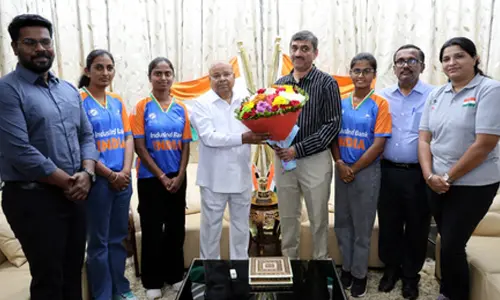Households key role in energy security

Households key role in energy security, India will achieve energy independence by 2050 if most households go for rooftop solar power generation under a new official policy, a leading expert has said.
India will achieve energy independence by 2050 if most households go for rooftop solar power generation under a new official policy, a leading expert has said. According to solar scientist Shantipada Gon Chaudhuri, the ministry of new and renewable energy (MNRE) is in the process of framing an ambitious policy to generate adequate electricity from non-conventional energy sources.
"The proposed policy would promote generation of solar power using the rooftops and backyards of every house," Gon Chaudhuri told IANS. "After consuming the required power, the family will be able to sell the rest to utility services and authorities at stipulated rates," he added. Gon Chaudhuri is involved in drafting the rooftop solar power generation policy, which he said would be ready within a year.
Saying work was already on in Tamil Nadu, Rajasthan, Gujarat, West Bengal, Karnataka and Delhi, he observed that the proposed policy would help India to achieve the goal of energy independence. "Without India's energy freedom and security, the country's growth cannot be achieved," Gon Chaudhuri said.
Generation of more and more energy from the non-conventional sources will help curb carbon emission and restrict rising pollution. The MNRE has revised its target of renewable energy capacity to 1,75,000 MW by 2022, comprising 1,00,000 MW solar, 60,000 MW wind, 10,000 MW biomass and 5,000 MW small hydro.
Finance Minister Arun Jaitley referred to this in his budget speech in parliament on February 28.
"Germany, Japan, UK and Spain already have rooftop solar power policy. These countries are generating huge power from solar and non-conventional sources," said Gon Chaudhuri, who got the prestigious 'Green Oscar' award in 2004.
He said that with a plan to produce 175,000 MW electricity by 2022 from non-conventional sources and a few lakh MW from usual sources, India could achieve energy independence by 2050. Not only households but various government, non-government and private institutions would be given room to generate solar power using their rooftops, water bodies and unoccupied lands.
Gon Chaudhuri has developed India's first floating solar power plant installed on a water body near Eco Park in New Town, near Kolkata.
The one MW capacity floating solar power project, financed by MNRE, was inaugurated on January 5. "It is not possible to convert the entire electricity generation system from conventional to non-conventional method overnight," he said. "It is also not practical that the total required electricity must be generated from the non-conventional sources. There must be a co-existence of both systems.
The life span of conventional power projects would be on an average 30 years. Natural gas, coal, hydro and nuclear resources are finite but non-conventional sources like solar are infinite. There must be coordination between natural gas, coal, hydro, nuclear and non-conventional resources based power generation. India's first public solar power operated irrigation pump was inaugurated by then Planning Commission head Manmohan Singh -- later prime minister -- in Herma tribal village in western Tripura in 1981.
India's total installed capacity of electricity (from coal, gas, nuclear, hydro and renewable) is 2,60,000 MW, including 31,700 MW from non-conventional sources. According to an official document, India is still more than 35 per cent deficit in energy. The total demand for electricity in India is expected to cross 950,000 MW by 2030.
The government has accorded in-principle approval for setting up Solar Parks in Gujarat, Andhra Pradesh, Uttar Pradesh, Meghalaya, Rajasthan, Madhya Pradesh, Tamil Nadu, Karnataka, Punjab and Telangana.
By: Sujit Chakraborty














